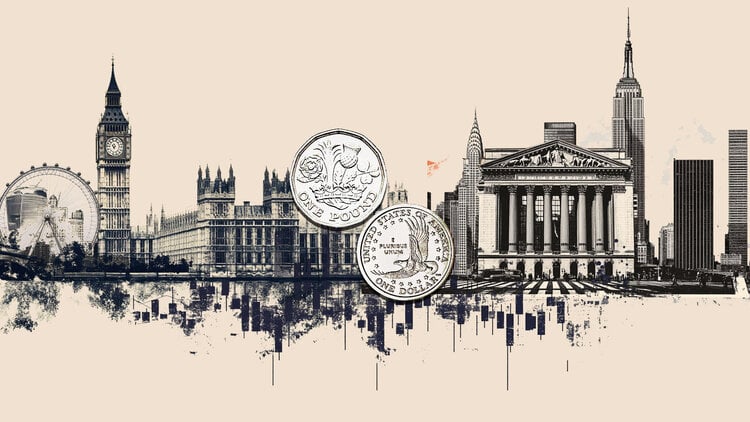- USD/CAD appreciates as the probability of further significant rate cuts by the Fed decreases.
- The CME FedWatch tool indicates a 92.1% probability of a 25 basis point rate cut in November, with no anticipation of a 50 basis point reduction.
- The Canadian dollar faces challenges as September inflation data has revived expectations of a 50 basis point rate cut by the BoC.
USD/CAD gains ground due to the strength of the US Dollar (USD), which could be attributed to the decreasing probability of further significant rate cuts by the Federal Reserve (Fed) following strong jobs and inflation data The USD/CAD pair is trading around 1.3770 during early European hours on Thursday.
Market expectations lean towards a total of 125 basis points (bps) in rate cuts by the US Federal Reserve (Fed) over the next year. According to the CME FedWatch tool, there is a 92.1% probability of a 25 basis point rate cut in November, with no expectation of a reduction greater than 50 basis points.
Traders await US retail sales data, scheduled to be released later in the day. Monthly consumer spending is expected to rise 0.3% in September, up from 0.1% in the previous reading.
The Canadian Dollar (CAD) is under pressure as Canada’s latest inflation report for September has revived expectations of a 50 basis point rate cut by the Bank of Canada (BoC) next week. The annual inflation rate fell to 1.6% in September, the lowest since February 2021, below the central bank’s 2% target.
Additionally, Standard Chartered’s research report anticipates that the BoC will implement a 50 basis point rate cut, instead of the previously expected 25 bps, at both remaining meetings of 2024. Slow economic growth, declining inflation, Rising inflation expectations and rising mortgage costs are contributing to the case for deeper cuts. The forecast now sees the BoC policy rate at 3.25% by the end of 2024 and 2.25% by the end of 2025, up from previous estimates of 3.75% and 3.0%, respectively.
The Canadian Dollar FAQs
The key factors that determine the price of the Canadian Dollar (CAD) are the level of interest rates set by the Bank of Canada (BoC), the price of oil, Canada’s main export product, the health of its economy, inflation and the trade balance, which is the difference between the value of Canadian exports and its imports. Other factors are market confidence, that is, whether investors bet on riskier assets (risk-on) or look for safe assets (risk-off), with the risk-on being positive for the CAD. As its largest trading partner, the health of the US economy is also a key factor influencing the Canadian dollar.
The Bank of Canada (BoC) exerts significant influence over the Canadian Dollar by setting the level of interest rates that banks can lend to each other. This influences the level of interest rates for everyone. The BoC’s main objective is to keep inflation between 1% and 3% by adjusting interest rates up or down. Relatively high interest rates are usually positive for the CAD. The Bank of Canada can also use quantitative easing and tightening to influence credit conditions, with the former being negative for the CAD and the latter being positive for the CAD.
The price of oil is a key factor influencing the value of the Canadian Dollar. Oil is Canada’s largest export, so the price of oil tends to have an immediate impact on the value of the CAD. Generally, if the price of oil rises, the CAD also rises, as aggregate demand for the currency increases. The opposite occurs if the price of oil falls. Higher oil prices also tend to lead to a higher probability of a positive trade balance, which also supports the CAD.
Although inflation has traditionally always been considered a negative factor for a currency, as it reduces the value of money, the opposite has actually happened in modern times, with the relaxation of cross-border capital controls. Higher inflation often leads central banks to raise interest rates, attracting more capital inflows from global investors looking for a lucrative place to store their money. This increases the demand for the local currency, which in the case of Canada is the Canadian Dollar.
The published macroeconomic data measures the health of the economy and may have an impact on the Canadian dollar. Indicators such as GDP, manufacturing and services PMIs, employment and consumer confidence surveys can influence the direction of the CAD. A strong economy is good for the Canadian dollar. Not only does it attract more foreign investment, but it may encourage the Bank of Canada to raise interest rates, resulting in a stronger currency. However, if economic data is weak, the CAD is likely to fall.
Source: Fx Street
I am Joshua Winder, a senior-level journalist and editor at World Stock Market. I specialize in covering news related to the stock market and economic trends. With more than 8 years of experience in this field, I have become an expert in financial reporting.







